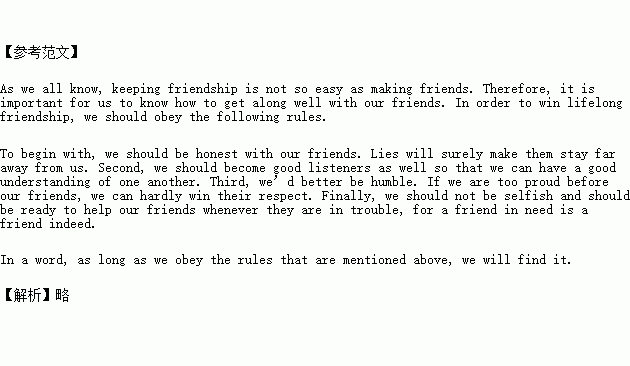��Ŀ����
�������
�������ƣ���������Զ�����������ֺ����� �������У����˶���Ҫ���ѡ�����������Ѻ�г�ദ����ʹ���ǵ����곤���أ�������������ʾ��дһƪӢ����ġ�
1. ��ʵ�����Ի�ʹ����Զ�����ǣ�
2. �������������ѵ�������
3. ���ģ������������ǰ������ �ͻ�ʧȥ���ѵ���
4. ��˽��������������ʱ�������ѡ�
ע�⣺
1. ����120���ң�
2. �ʵ��������� ����ϸ�ڣ���ʹ�������ᣬ����Ҫ��䷭�롣
___________________________________________________________________________________________
___________________________________________________________________________________________
___________________________________________________________________________________________
___________________________________________________________________________________________
___________________________________________________________________________________________
___________________________________________________________________________________________
___________________________________________________________________________________________
___________________________________________________________________________________________
ssage3��2016��ȫ���¿α�I��C ��
��� | ���� | ���� | �Ѷ� | ����ʱ�� |
������ | ɯʿ���ǵ�Ϸ�类����ɼ������ҵ����ԣ���������Щ���ҵĴ��Ժ��ӳ | 258 | ������ | 5���� |
I am peter Hodes ,a volunteer stem courier. Since March 2012, I��ve done 89 trips of those , 51 have been abroad, I have 42 hours to carry stem cells����ϸ����in my little box because I��ve got two ice packs and that��s how long they last, in all, from the time the stem cells are harvested from a donor(������) to the time they can be implanted in the patient, we��ve got 72 hours at most, So I am always conscious of time.
I had one trip last year where I was caught by a hurricane in America. I picked up the stem cells in Providence, Rhode Island, and was meant to fly to Washington then back to London. But when I arrived at the check-in desk at Providence, the lady on the desk said: ��Well, I��m really sorry, I��ve got some bad news for you-there are no fights from Washington.�� So I took my box and put it on the desk and I said: ��In this box are some stem cells that are urgently needed for a patient-please, please, you��ve got to get me back to the United Kingdom.�� She just dropped everything. She arranged for a flight on a small plane to be held for mere-routed(�ĵ�)me through Newark and got me back to the UK even earlier than originally scheduled.
For this courier job, you��re consciously aware than that box you��re got something that is potentially going to save somebody��s life.
1.Which of the following can replace the underlined word ��courier�� in Paragraph17
A. provider B. delivery man
C. collector D. medical doctor
2.Why does Peter have to complete his trip within 42hours?
A. He cannot stay away from his job too long.
B. The donor can only wait for that long.
C. The operation needs hat very much.
D. The ice won��t last any longer.
3.Which flight did the woman put Peter on first?
A. To London B. To Newark
C. To Providence D. To Washington

